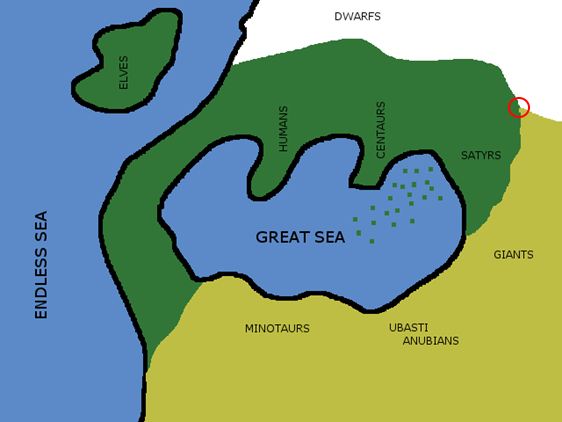Truth be known, the Crowfield campaign is an attempt to have a fantasy game that emulates the sci-fi classic Traveller RPG. That is why the focus is on sand-box exploration, mercantile trade, and human-centric play.
One of the neat things about original Traveller is that it had a method of generating alien animals that an explorer might encounter when visiting a new planet. This was a clever solution to a problem: if a player might visit a hundred worlds, how do you have unique encounters on each planet without having a "monster manual" that contains thousands of unique beasts? You have tables that generates the beats for each world.
I decided to try to translate that table for my use. Below is the first creature that I rolled up. Let me know what you think.
Sh'hemu
| Armor Class | 11 |
| Hit Dice | 2 |
| Move | 120' (40') |
| Attacks | Hooves |
| Damage | 1d6 |
| Number Appearing | 1d6 |
| Morale | 7 |
| Treasure Type | special |
| Intelligence | Animal (2) |
| Alignment | Neutral |
| Monster Type | Normal Animal |
| Terrain | Desert |
| % in Lair | n/a |
| Special Attacks | Nil |
| Special Defenses | 25% chance of Fear Aura |
| Magic Resistance | Normal |
| Size | M (220 pounds) |
Reaction (1d20):
| Roll | Reaction |
|---|---|
| 1 - 17 | Attacks |
| 18 - 19 | Flees |
| 20 | Waits |
Sh'hemu (singular & plural) vaguely resemble small, brown and tan zebras with sharp teeth for rending flesh off of carrion. They are smaller than a zebra, and are approximately the same size as a North American white-tail deer.
Sh'hemu are carnivores, but they only hunt when truly desperate. They prefer to come across recently killed animals (or humans!), and use their numbers to scare off the original predator. When more than 1 is encountered, they always attack in groups of 2 or 3 against any given foe.
As indicated, Sh'hemu aren't hunters. While aggressive, they only attack to protect themselves and their meal. They will stop attacking when their opponents retreat. They will not pursue fleeing opponents.
There's a 20% chance that any given pack contains a sh'hemu that emits a fear aura. Any creature that comes within 60' of such a Sh'hemu must make a saving throw or flee in the opposite direction at its max speed for 1d10 rounds. Sh'hemu are immune to the fear aura of other sh'hemu.
Treasure: Sh'hemu don't have treasure in the traditional sense, but a pelt is worth 2d6 × 10 gold coins. If the party takes special precautions during the fight, then a pelt can fetch 3d6 × 10 gold coins instead. Special precautions means that every character attacking a given sh'hemu must accept a -4 on their attack roll and a -1 on their damage roll. It takes 2d6 × 10 minutes to skin a sh'hemu, potentially exposing the party to further random encounters.
Food value: Sh'hemu meat is potentially toxic to humans. Eating cooked sh'hemu meat requires a saving throw vs Poison, or the character will suffer from delirium (-1d6 to Intelligence and Wisdom). Characters who fail the saving throw are allowed a new one each day to see if the toxins have run their course. Recovery doesn't begin until then. Lost stat points will recover at 1 point per day.
